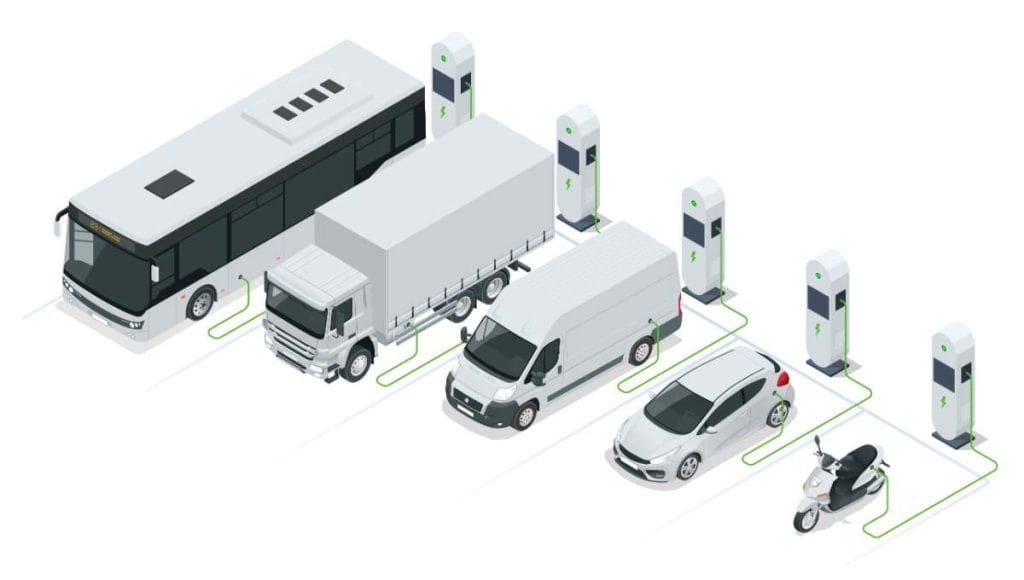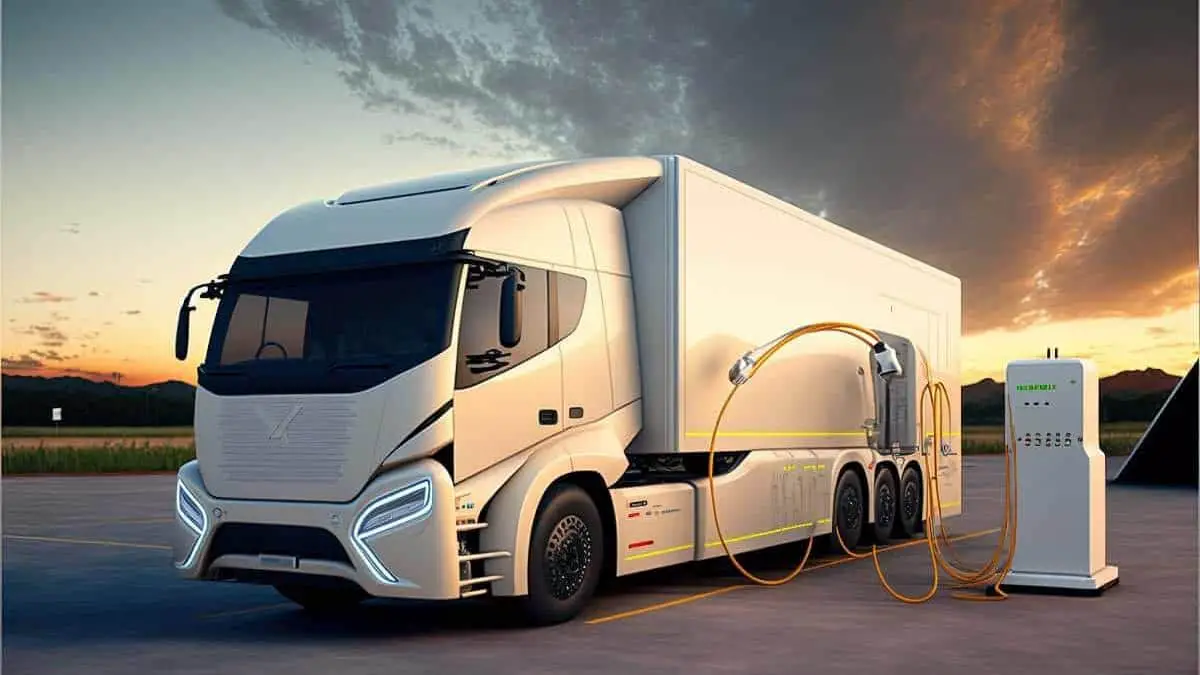The presence of zero emission commercial vehicles is growing. With concerns mounting over our carbon footprint, there’s been a substantial push towards cleaner, greener options – and our modes of transport are no exception.
I’ll explore California’s leadership in zero-emission vehicle legislation and discuss ambitious targets set by the US Government for a sustainable transportation future. Y
ou’ll also get a glimpse of projected market adoption trends for these alternative fuel vehicles and initiatives like EnergIIZE Commercial Vehicles to promote green energy.
While adopting these emission-free vehicles might seem daunting at first, rest assured – businesses across the globe are making strides towards this change, supported by various incentives.

Key Takeaways
| 1. | Zero-emission commercial vehicles are gaining momentum in the market due to environmental concerns and regulatory mandates. |
| 2. | California is leading in commercial zero-emission vehicle legislation by imposing a ban on the sale of new diesel trucks starting in 2036. |
| 3. | Technological advancements have led to the development of battery-electric trucks that offer reliability, maneuverability, and driver visibility. |
| 4. | Government initiatives and programs, such as the Drive to Zero program, aim to accelerate the growth of the zero-emission commercial vehicles sector. |
| 5. | By 2030, it’s estimated that zero-emission commercial vehicles will capture a significant share of the European, American, and Chinese markets combined, driven by increased adoption and government incentives. |
What are zero-emission commercial vehicles?
Zero-emission commercial vehicles include heavy-duty trucks, buses, and vans that do not emit any harmful substances or pollutants. These vehicles operate on alternative energy sources such as electricity or hydrogen fuel cells.
The Rising Demand for Zero Emission Commercial Vehicles
The demand for zero emission commercial vehicles is expanding rapidly.
This surge stems from the growing need for sustainable transportation and clean energy, and the appearance of mandates banning internal combustion engine commercial vehicles.
At the same time many businesses are acknowledging the long-term economic advantages associated with renewable resources and eco-friendly transportation.
Electric vehicle technology, which once was viewed as a distant future concept, is now being seen as a practical solution to reduce the carbon footprint in commercial transport.
Furthermore, the development of advanced battery technologies has led to the emergence of reliable heavy-duty vehicles like Kenworth’s Zero Emission Trucks.
These trucks are not only environmentally friendly but also offer maneuverability and excellent driver visibility, making them an attractive proposition for businesses.
It’s not just about battery-electric solutions though. Hydrogen fuel cell technology offers another viable alternative for achieving zero emissions in commercial transport.
Fuel cell electric vehicles emit only water vapor as exhaust, making them truly emission-free vehicles.
Whether it’s battery-electric or hydrogen fuel cell options, the momentum towards zero-emission commercial transport is undoubtedly accelerating.
California’s Leadership in Commercial Zero Emission Vehicle Legislation
California has always been at the forefront of adopting green technologies and reducing carbon emissions.
The state’s proactive stance on environmental issues is evident in its legislation regarding zero-emission vehicles.
For instance, Executive Order N-79-20 requires all new cars and passenger trucks sold in California to be zero-emission by 2035—an ambitious but achievable goal given current technological advancements.
This order isn’t limited to passenger vehicles either; it extends to heavy-duty trucks as well.
In fact, under proposed regulations all heavy-duty drayage trucks in operation within California must be zero emissions beginning in 2035—a clear testament to their commitment towards achieving a greener future in transportation.

A Forward Looking Approach: US Government’s Ambitious Targets for Zero Emissions
At a national level too, there’s been significant progress made towards realization of zero-emissions goals within commercial transport sectors across America.
Aiming at an eco-friendly future,The Inflation Reduction Act, among other legislations provides tax incentives for clean commercial vehicle acquisition along with encouraging development of electric vehicle charging infrastructure nation-wide.
Moreover, The Drive To Zero Program, aims at accelerating growth within this sector through government initiatives that focus on both target-setting and execution strategies leading up to these targets.
The ultimate goal? All new heavy-duty trucks going electric by 2040 – a plan that demonstrates how serious the United States Government is about drastically reducing vehicular pollution levels.
Projected Market Adoption of Zero Emission Commercial Vehicles
According to estimates by industry experts, it is expected that by 2030, zero-emission commercial vehicles will capture around a 28% share. This equates to approximately 500k units of European, American, and Chinese markets combined.
Notably, this shift isn’t restricted solely to battery-powered solutions. Hydrogen fuel cell technology is also beginning to gain traction within the industry due to the potential it holds for facilitating a zero-emissions future.
EnergIIZE Commercial Vehicles:Accelerating Shift Toward Green Energy
Initiatives such as EnergIIZE Commercial Vehicles are designed to promote the transition to sustainable alternatives. This is achieved through the provision of financial incentives, aimed at helping fleets procure zero-emission trucks.
As part of a larger societal movement, clean energy initiatives like these hold the power to transform the way industries operate. They pave the path towards more environmentally friendly alternatives, thereby contributing significantly to reducing the overall carbon footprint.
A Positive Response from Manufacturers Towards The Shift Toward Zero-Emission Commercial Transport.
The response from manufacturers has also been notably positive regarding the overall shift towards eco-friendly alternatives.
GM recently announced plans to work on two new models of zero-emission commercial vehicles, while other carmakers continue to explore both battery-powered and hydrogen fuel-cell technologies.
Therefore, it becomes evident that manufacturers worldwide have begun to respond positively to emerging market trends that heavily favor green technology.
This trend clearly signals the birth of a new era within the automotive industry. It is transitioning away from reliance upon fossil fuels and moving forward by embracing sustainability at the heart of its operations!
- Tesla Charger Installation Cost (Home Setups) - March 1, 2024
- Tesla Phone Key Disconnected (Troubleshooting Guide and Quick Fixes) - March 1, 2024
- Tesla FSD 12 (Explained) - March 1, 2024